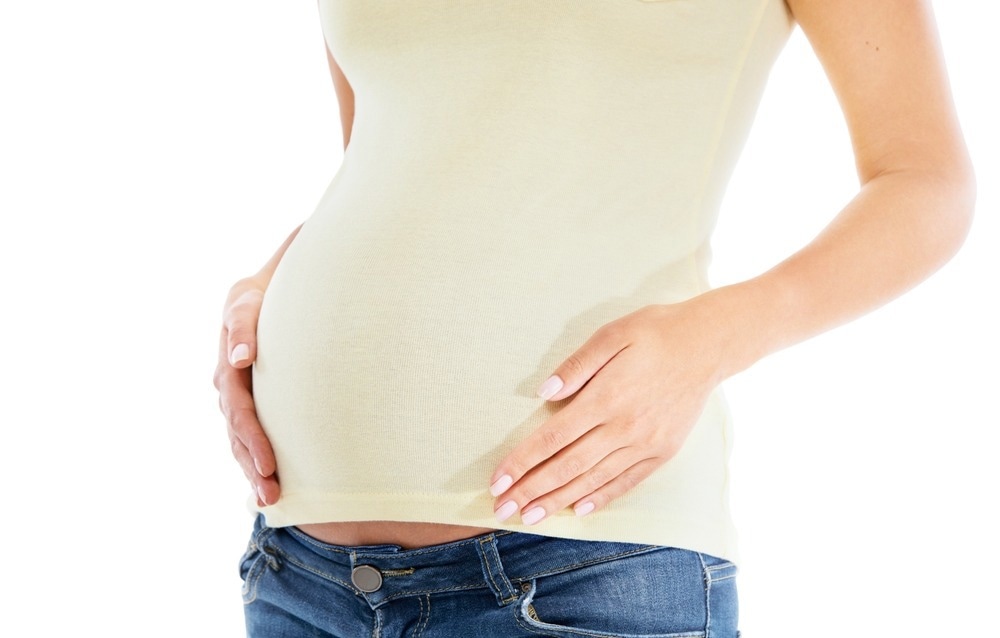A recent study published in the JAMA Network Open Journal assessed whether metabolic phenotyping during pregnancy, beyond pre-pregnancy obesity or gestational diabetes status, increases the risk of adiposity risk in the offspring.

Study: Novel Metabolic Subtypes in Pregnant Women and Risk of Early Childhood Obesity in Offspring. Image Credit: PeopleImages.com-Yuri A/Shutterstock.com
Background
Childhood obesity has drawn significant attention globally due to its association with premature morbidity. Recent research has indicated that maternal hyperglycemia and obesity significantly influence offspring obesity in the early years of life.
These studies have pointed out that both glycaemic and non-glycaemic metabolic factors in pregnant women influence fetal development. However, it is important to identify how these factors influence offspring adiposity.
Introduction
Prior studies have evaluated the relationship between individual/classes of metabolic biomarkers, such as insulin, lipoproteins, glucose, and free fatty acids (FFAs), with offspring adiposity.
However, these studies failed to elucidate how interrelated biomarkers affect classes of bioactive compounds. It is important to analyze the metabolic profile during pregnancy to understand whether biomarkers influence offspring obesity.
This study hypothesized that the unsupervised classification approach provides prominent subgroups linked to differential adiposity traits in the offspring.
About the Study
This observational study is based on a pre-birth cohort that recruited pregnant women between 2010 and 2014.
All participants in this study were 15 years or older, had no history of stillbirths or singleton birth, and were not diagnosed with serious chronic disease. A total of 1,325 women were recruited in this study.
Relevant data were obtained at different time points, i.e., mid-pregnancy, late-pregnancy, delivery, and early childhood. Although blood samples of 1,325 women were obtained at mid-pregnancy, 1,116 participants provided offspring anthropometry data, and 727 participants provided childhood data.
It was observed that women who did not have neonatal or childhood anthropometric data belonged to a younger subgroup, had a lower diet quality, were less educated, and were likely to have smoked during their pregnancy.
An unsupervised k-means clustering method was used to detect metabolic subgroups of women. Some of the important biomarkers incorporated in k-means clustering were glucose, high-density lipoprotein cholesterol (HDL-C), total cholesterol (TC), triglycerides (TGs), insulin, free fat mass, and tumor necrosis factor α (TNF-α). The ratio of TGs: HDL-C and Homeostatic Model Assessment of Insulin Resistance (HOMA-IR) were also included as parameters.
Neonatal body composition (e.g., fat mass-FM and fat-free mass-FFM) was assessed using air displacement plethysmography (PeaPod). In early childhood, similar measurements were obtained using whole-body air displacement plethysmography (BodPod)
Study Findings
The mean maternal age of the participants was around 28 years. Approximately 50% of the offspring were female, whose average birthweight was 500 grams, and 1.9% were large in their gestational age. The BMI at early childhood (~5 years of age) revealed that 6.2% had obesity.
Five unique maternal metabolic subgroups were identified based on seven biomarkers derived from fasting blood samples at 17 gestational weeks.
Based on the level of the metabolic biomarkers, the identified subgroups or references are high HDL-C, dyslipidemic–high FFA, IR-hyperglycemic, and dyslipidemic–high TGs. Additionally, a control group with normal BMI was identified.
The subgroups displayed differences in lifestyle, demography, and prenatal risk factors for offspring obesity. It was observed that the mothers related to the IR-hyperglycemic subgroup were at the highest risk of offspring adiposity in the neonatal and childhood periods.
Furthermore, mothers of the dyslipidemic–high FFA or IR-hyperglycemic subgroups exhibited a greater risk of obesity in their offspring.
The IR-hyperglycemic subgroup was characterized by insulin resistance, and an atherogenic lipid profile was seen during mid-pregnancy. It was observed that TGs are important drivers of newborn weight. Around 14% of the cohort belonged to the dyslipidemic–high TGs subgroup.
A robust association was found between high TGs exposure in utero and greater offspring adiposity. TGs in the presence of insulin resistance also enhanced the risk of offspring adiposity. In contrast, TGs did not influence offspring adiposity without a higher glycemic index.
FFA levels in mid-pregnancy were already higher in the dyslipidemic–high FFA subgroup than in the FFA levels control subgroup in late pregnancy.
A high HDL-C subgroup constituted 27% of the study cohort, and offspring from this group of women exhibited no difference in adiposity at birth or early childhood compared to the control group.
Conclusions
The current study has limitations, including the lack of childhood anthropometric data of all participants' offspring. Interestingly, women who failed to provide data on their offspring's adiposity outcomes had a lower diet quality, smoked during their pregnancy, and were less educated.
These conditions have been linked to offspring obesity. Another limitation of the k-means clustering algorithm was the lack of a predefined k value.
Despite the limitations, the current study indicated that the unsupervised clustering method could effectively identify distinct metabolic subgroups of pregnant women.
These subgroups could demonstrate the differential risks of offspring adiposity in early childhood.